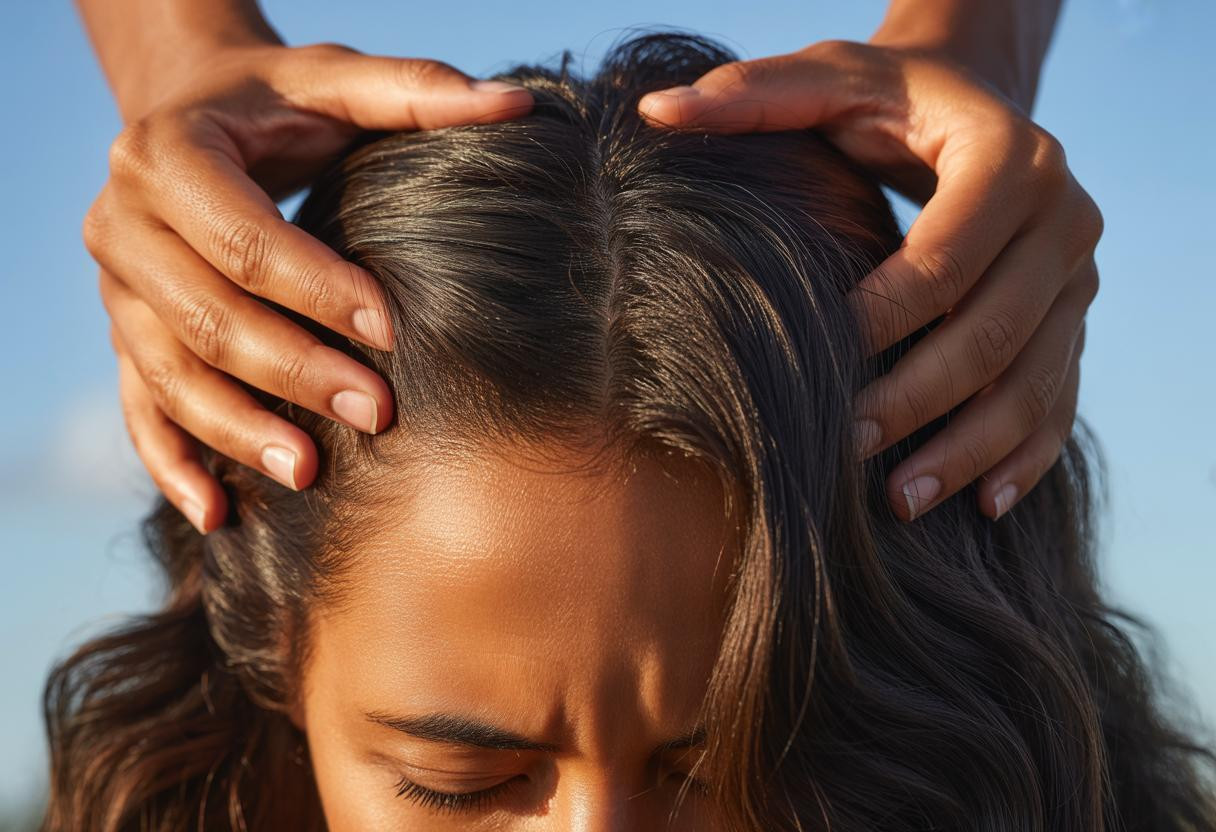When Sarah, a 48-year-old marketing executive, discovered her ponytail had thinned to half its former thickness, she didn’t turn to expensive treatments or supplements. Instead, she committed to a simple 4-minute daily scalp massage that transformed not just her hair, but her entire approach to self-care. Six months later, her stylist noticed measurable improvements in hair thickness—and Sarah felt more confident than she had in years.
Why the 4-minute protocol works for women over 45
Recent studies show that 4 minutes of daily scalp massage can increase hair thickness by stretching dermal papilla cells beneath follicles. For women experiencing post-menopausal hair changes, this mechanical stimulation offers hope without harsh chemicals or invasive procedures.
The magic number isn’t arbitrary—research from 2016 followed participants who massaged for exactly 4 minutes daily over 24 weeks, showing consistent thickness improvements. Unlike supplements that work from within, scalp massage provides immediate stress relief while potentially boosting long-term hair health.
The technique that celebrity stylists actually use
Forget aggressive rubbing or expensive gadgets. The most effective approach uses gentle fingertip pressure in slow, circular motions across the entire scalp. Start at your hairline and work systematically toward the crown, spending about 30 seconds on each section.
- Use the pads of your fingers, never nails
- Apply pressure similar to shampooing—firm but comfortable
- Focus on areas where hair feels thinnest
- Breathe deeply to maximize stress-reduction benefits
How thicker hair changes your styling game after 50
Thicker hair acts like a foundation garment for your face—it provides structure and volume that can make you look years younger. Women with fuller hair can pull off sleeker styles, statement earrings, and higher necklines that might overwhelm those with fine hair.
Think of your hair as architectural framing. Just as a well-built house needs strong bones, your hairstyle needs sufficient density to support the sophisticated looks that flatter mature women. Embracing natural texture and thickness often works better than fighting against age-related changes.
The stress connection most women miss
Beyond mechanical benefits, scalp massage reduces cortisol levels that contribute to hair thinning. Chronic stress accelerates hair aging, particularly during perimenopause when hormonal fluctuations already challenge follicle health.
Research shows that brief daily rituals can significantly reduce anxiety, creating a positive cycle where lower stress supports healthier hair growth patterns.
When NOT to massage your scalp
Avoid scalp massage immediately after chemical treatments, during active scalp infections, or if you have severe androgenetic alopecia without dermatological guidance. Over-massaging can cause inflammation that counteracts benefits, so consistency matters more than intensity.
Real results from women who tried it
Linda, 52, noticed her hair felt fuller within 8 weeks of starting daily massages. “I wasn’t expecting miracles, but my stylist commented that my hair looked healthier before I even mentioned what I was doing,” she shares. The key was treating it like brushing teeth—non-negotiable daily maintenance rather than occasional pampering.
Building it into your existing routine
The most successful women integrate scalp massage into established habits. Try it while your morning coffee brews, during evening skincare, or while watching the news. Small daily practices compound over time, creating transformations that feel effortless.
- Set a phone timer to ensure full 4 minutes
- Use it as meditation time—focus only on the sensation
- Apply a few drops of scalp oil for added nourishment
Remember, this isn’t about reversing decades of change overnight. It’s about honoring the woman you are today while supporting the hair you want tomorrow. Four minutes of self-care can become the foundation for feeling more confident, more beautiful, and more authentically yourself—regardless of what the calendar says.
